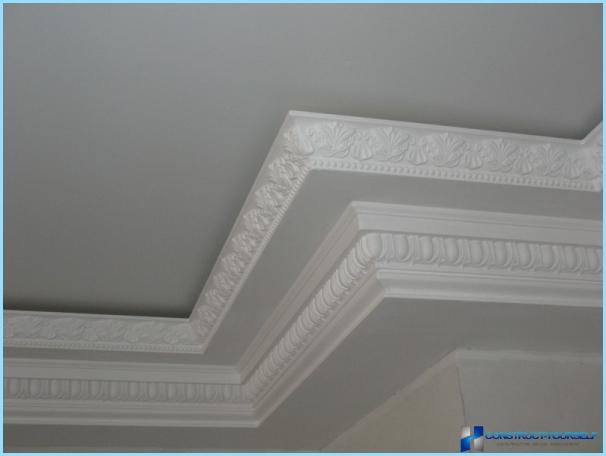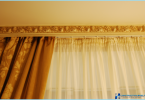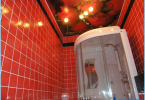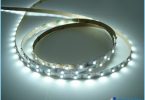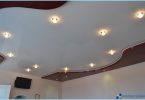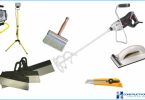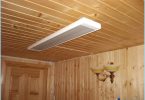Among the different types of final finishing of the ceiling is considered to be the most popular design ceiling moldings. Large selection of this decorative material, differing in cost, shape, colour and method of manufacture, allows to place a ceiling in accordance with their needs and aesthetic preferences.
What is ceiling moldings ↑
Ceiling moldings, or fillet, is a decorative edging installed around the perimeter of the ceiling at the final stage of repair. Making a plinth is a great way to make the room more attractive and exclusive, but also to hide some defects (cracks, bumps, etc.) formed at the junction between walls and ceiling.
When choosing ceiling moldings, consider the following options:
- The texture of the product;
- The shape and width;
- The material from which was made the plinth;
- The color of the decorative element.
Select the invoice ↑
There are the following texture ceiling moldings:
- The laminated type, the fillet has a smooth surface;
- The extruded strip is covered with grooves of different diameters;
- Injection molding texture on the baguette caused the convex thread.
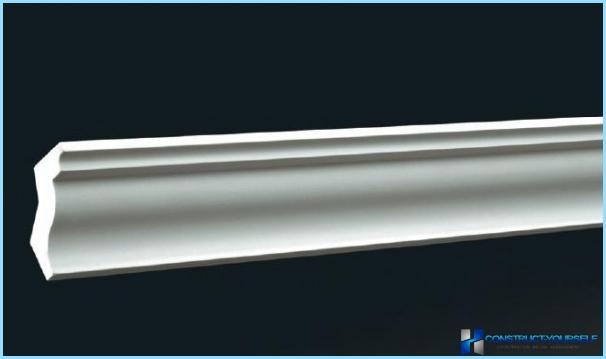
It is recommended not to overload the interior decorative elements, so if the walls and ceiling of the room have a pronounced texture, pattern or design, then you should choose laminate baseboard. But if the ceiling and walls feature a smooth material, embossed quirk will have a positive impact on the overall look of the room.
How to find the optimal width of the plinth ↑
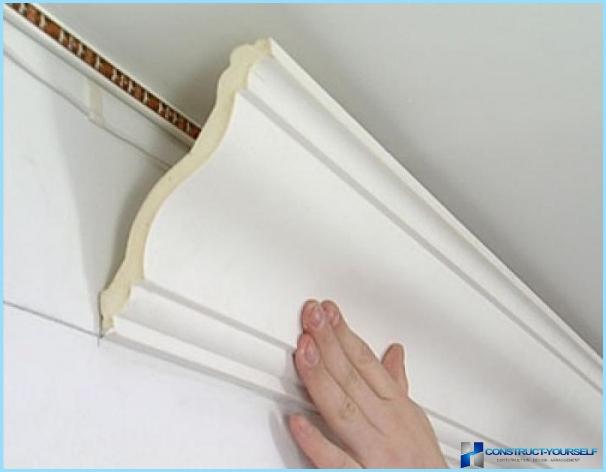
Mounted below the ceiling tiles did not spoil the overall concept of the room, it is recommended to choose its width in accordance with the height and area of the room.
The more ceiling height, the wider and heavier must be the quirk, as though skirting a narrow and close the joints between the wall and the ceiling, its aesthetic function is lost. This statement is equally suitable for large or narrow rooms with high ceilings.
In rooms with standard ceilings are successfully used narrow and wide baguettes – in this case everything depends on the ideas of the designer and purpose of the decor. A skirting Board perfectly hides the differences of height of the ceiling and visually smoothes the corners, then as the product of smaller width will look more elegant.
Materials ↑
The most popular raw materials used in the manufacture of ceiling moldings, is considered to be foam, Styrofoam, polyurethane, plaster, wood and plastic. Each of these materials has its advantages and disadvantages.
The foam ↑
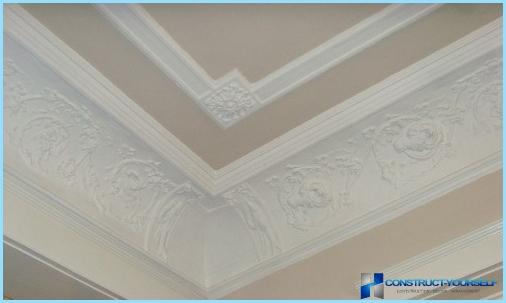
Moldings of the foam are low cost and easy installation easy to trim with a knife and repeatedly painted. Their small size and soft edges give the opportunity to correct irregularities in the ceiling. Foam fillets are very fragile, to install them, you must be careful.
Polystyrene ↑
Polystyrene is, unlike foam, more endures mechanical damage. However, the cost of such skirting boards much more expensive.
Polyurethane ↑
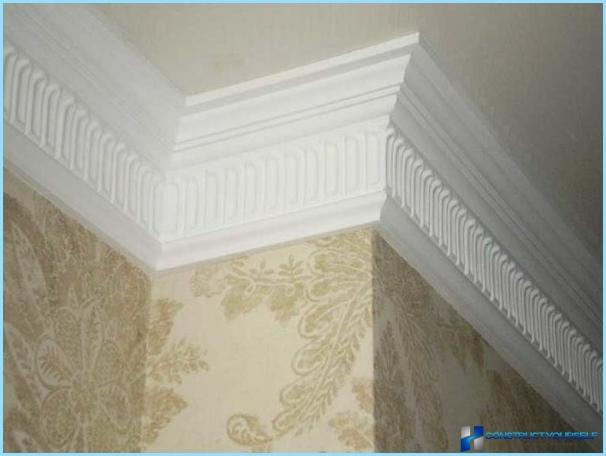
Polyurethane crown moldings, recently appeared on the market of decorative and finishing materials, has already managed to catch the fancy of Russian consumers. This durable and lightweight material easily tolerate changes in temperature, is resistant to moisture and has improved resistance to mechanical damages.
Gypsum ↑
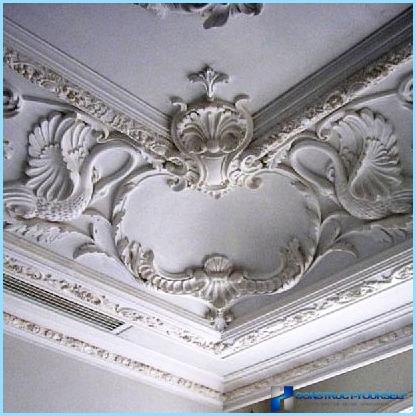
Gypsum is a traditional material for the manufacture of ceiling moldings and stucco. Thanks to the plasticity of the plaster moldings are often unique decorating items, especially if they are made individually developed sketches. Gypsum has a high environmental friendliness and durability, but the cost of such ceiling moldings high enough.
Tree ↑
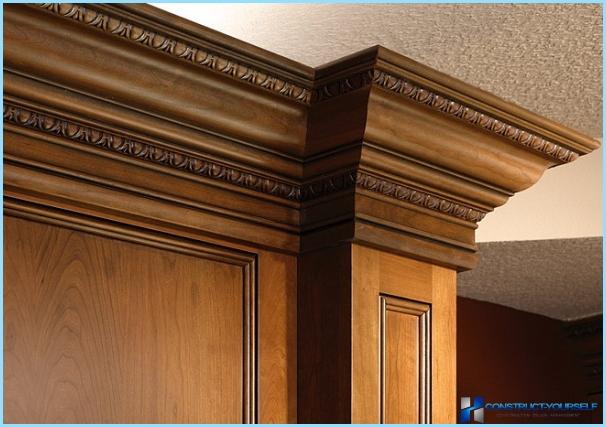
The tree is considered an elite material, which looks good only in luxury rooms-Suite, have a unique style. To create ceiling moldings most popular are the following types of wood:
- Spruce;
- Oak;
- Mahogany;
- Ash.
Plastic ↑
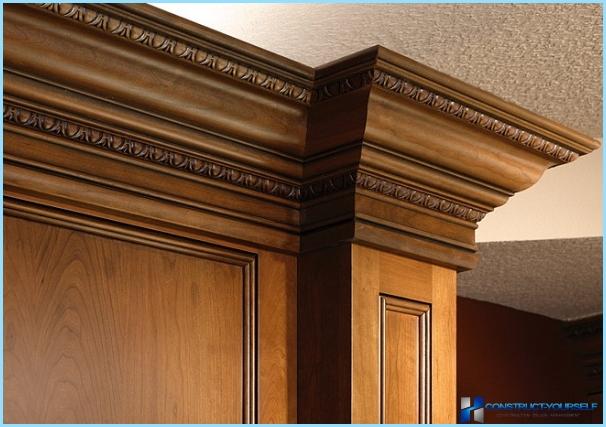
Plastic skirting or PVC moldings, represent a cheap, easy to work material. Its main advantages are resistance to moisture and the abundance of colors. Available in smooth and textured plinths, plain colors or imitating metal, wood, etc., however, choosing plastic ceiling baguette, remember that its subsequent repainting is impossible. Often the plastic skirting is fixed to the ceiling with screws or construction staples.
The right choice ↑
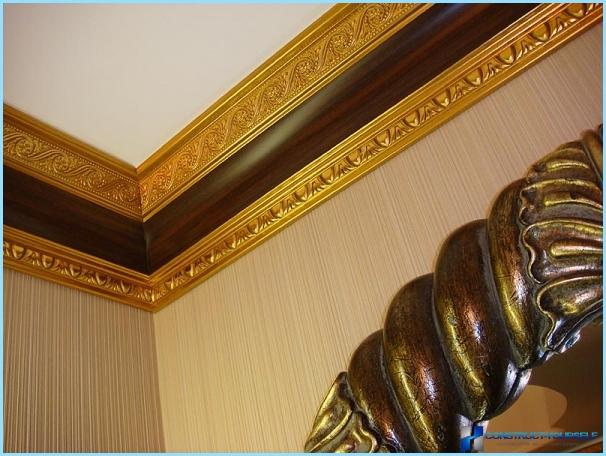
Choosing the material of manufacture, shape and size ceiling moldings should first take into account the overall concept of the room. Interior details should be combined with each other, an undesirable sharp contrasts with the color of the ceiling and walls. Otherwise, choose the ceiling tiles is not difficult, it all depends on the preferences of the buyer and its financial capacity. You should also carefully and gently install the plinth, or even the most expensive and beautiful product will make the room uncomfortable.

